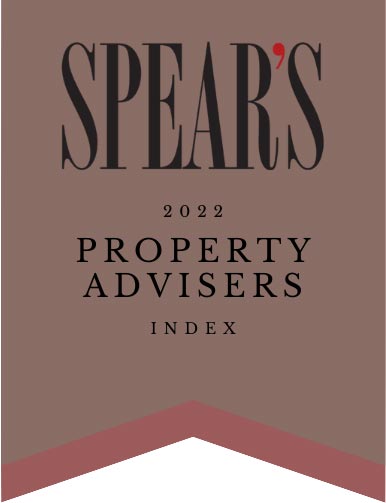It’s been almost two years since the government increased the amount of Stamp Duty Land Tax that Buy to Let landlords need to pay on second homes.
Since 1st April 2016, those wishing to purchase additional properties (whether intended for personal use, as a Buy to Let investment or as a holiday home) have had to pay an extra 3% in stamp duty land tax on the entire purchase price, on top of the normal tax rate.
New stamp duty rates1
| Band | Normal Rate | Additional Property * |
|---|---|---|
| less than £125k | 0% | 3% ** |
| £125k to £250k | 2% | 5% |
| £250k to £925k | 5% | 8% |
| £925k to £1.5m | 10% | 13% |
| rest over £1.5m | 12% | 15% |
| * Higher stamp duty rates for any additional properties from April 2016. ** For additional property the first £40k will attract 0% tax. From £40k to £125K the rate will be 3% on full purchase price. |
||
On paper, it may initially appear to be a small percentage. However, in reality, the revised stamp duty charges have been shown to add tens of thousands of pounds to the cost of purchasing a Buy to Let property.
How the stamp duty increases have affected the Buy to Let (BTL) market
As you would expect, this move had a significant impact on the affordability of investing in multiple homes. The extra fees have discouraged many Buy to Let landlords from expanding their portfolio, and as such, this side of the property market slowed considerably after clients rushed to complete on their purchases before the new regulations came into effect. In fact, according to the BBC, mortgage activity halved in the twelve months following the cut-off date: 142,000 loans were advanced for house purchases in 2015-2016, compared to just 71,100 the following year.2
Data suggests that landlord purchases have remained low ever since, but, as expected, first-time buyer mortgages have increased. This is largely because First Time Buyers purchasing property worth under £300,000 do not currently have to pay stamp duty at all3. It will be interesting to see whether this trend has continued into 2018 when new statistics are announced in a couple of months’ time.
What the latest PRA changes mean for landlords
As well as concerns over the rising costs of tax on multiple properties, landlords have also been affected by the most recent regulations from the Prudential Regulation Authority (PRA), which affect an investor’s overall eligibility for a mortgage.
The PRA aims to reduce irresponsible lending and tackle rising arrears and defaults from Buy to Let landlords by instructing lenders to follow stricter lending criteria.
As of September 2017, mortgage providers now need to adhere to a more rigid lending process if a client approaches them seeking a second mortgage. They will need to carry out a stress test to calculate whether the mortgage would still be affordable at an average mortgage interest rate of 5.5%. If you, the investor, cannot prove that you will be able to make the monthly repayments on this theoretical basis, then you may find it harder to secure a good deal.
You will most likely be asked to provide full details of your assets and liabilities. Most lenders will ask you to supply a business plan as they will want to see that you are planning for any financial eventuality and that your investment strategy is watertight.
On top of this, mortgage interest relief is being phased out over the next four years and is being replaced by a 20% mortgage tax credit. Simplistically, the net effect of this is that there is no change to the total tax basic rate taxpayers pay on their rental income. However, higher rate taxpayers are likely to see an increase in the tax they pay on rental income.
It is also imperative to note that with changes to the way rental income counts towards your total taxable income under the new system. As a result, the vast majority of professional landlords and those with additional income may now find themselves in the higher rate tax bracket.
With these changes in mind, we recommend that you seek professional tax advice before making any investment decisions.
Although there are a few more hoops to jump through as a property owner than previously, there is still a broad range of products and lenders available to Buy to Let investors. Seeking professional advice could be hugely beneficial in helping you to acquire the mortgage borrowing you require and help you to keep your portfolio profitable.
Redefining portfolio landlords
The PRA has revised the definition of a ‘portfolio landlord’. You are now considered to fall into this bracket if you have four or more mortgaged properties. Investors will drop out of this category altogether if they only own a handful of Buy to Let homes, student or commercial buildings – but those who remain eligible for the title may face further challenges when applying for a mortgage or indeed a remortgage.
All private and high street banks who are lending to portfolio landlords need to follow specialist underwriting processes, complicating application procedures and stamping more red tape across their entrepreneurial endeavours.
This is where the advice from a specialist mortgage broker can be invaluable. They can help you to get all the documentation that you need together before it is presented to the lender. Their experience in dealing with these cases on a regular basis may speed up the process and increase the likelihood of your application being accepted as they know how best to present your mortgage application to lenders.
Is it time to remortgage?
As we head into the spring of 2018, many landlords who opted for a two year fixed rate agreement on their mortgage will find that the initial rates on their mortgages are coming to an end. And with interest rates predicted to rise in the coming weeks, largely due to a rumoured base rate shake-up from the Bank of England, many may be concerned that they will need to pay significantly more on a monthly basis than they have been preparing for.
The only way to combat interest rate hikes is to act now and find a remortgaging deal that offers more attractive terms than those on offer from your current lender’s Standard Variable Rate (SVR).
What to do if you’re worried about rising interest rates
The changes to the Buy to Let landscape in the UK are certainly bringing new challenges to the property market – but it’s not all doom and gloom for investors. The best way to ensure you find a suitable remortgaging deal is to speak with a specialist mortgage broker at Large Mortgage Loans. Even in the wake of the PRA’s regulatory changes, there is a huge range of Buy to Let mortgage products on the market, and our team have access to all of them, not just those presented by High Street banks.
We understand that remortgaging a Buy to Let property is becoming trickier for landlords, but we are here to simplify the application process and find the best possible agreement for your individual circumstances.
A broad range of lenders with whom we have strong relationships will take a ‘common sense’ approach to understanding your finances and consider your broader income profile, opening doors to better mortgage deals that will suit your investment strategy in the longer term.
Contact us today to learn more about how the Buy to Let market is continuing to be affected by stamp duty tax changes, and how Large Mortgage Loans can help you tackle new challenges by providing unmatchable support and advice.
The Financial Conduct Authority does not regulate some aspects of buy to let mortgages.
You may have to pay an early repayment charge to your existing lender if you remortgage. Your home may be repossessed if you do not keep up repayments on your mortgage.




















